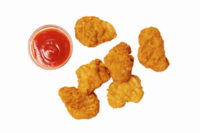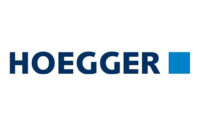Cooking, chilling and freezing systems are a necessary component of the post-harvest process. But facility examinations can help enhance chilling capacity, renovate outdated older facilities and improve sustainability.
“This practice isn’t novel or new, but a thorough investigation of efficiencies (or lack thereof) within a plant’s chilling processes has led to some neat renovations within the industry,” says Jennifer Martin, Ph.D., assistant professor, Colorado State University, Fort Collins, Colo. “In some cases, these renovations don’t require large investments in facilities, equipment, etc., but rather strategic utilization of existing equipment and facilities.”
For example, she notes that a facility she visited earlier this year was using three to four chill operations that weren’t contributing much collectively to their core product temperature (although they’d bought into the “more is better mentality”).
“By assessing the energy investment and output in each unit, they were able to determine the chilling operation that had the largest net influence on core product temperature and eliminate all other chill operations,” she says. Economically, the advantages of eliminating two to three other chilling systems were huge.
“Likewise, reducing the energy used for inefficient chilling enhanced sustainability efforts,” says Martin.
To conserve resources, some plants are restructuring their shifts, “so instead of running five days with two eight-hour shifts, they will run for four days with two shifts of 10 hours to use less resources,” says Jeff Buhr, animal physiologist scientist, USDA Agricultural Research Service, Athens, Ga.
Last year, University of Arkansas researchers reviewed power use at poultry processing plants and recommended energy efficiency measures that would pay for themselves within two years.
Their ideas included installing an automatic blow-down system to improve boiler efficiency, adding variable speed motors and drive to the cooling towers of the refrigeration system and using a more efficient air compressor for the plant air system, adding temperature or occupancy sensors to the cooling shed so cooling fans become automated.
Hot water is required for scalding and cleaning birds, so the researchers recommended generating hot water directly instead of employing the standard intermediate step of producing steam. This change, however, will be quite costly to current boilers, so they recommend adding this measure when a boiler change-out is due.
Meanwhile, on the bird-chilling side, these systems put a serious strain on the water supply, using a hefty amount of water: roughly seven gallons per bird. Processors are reviewing water and energy conservation efforts and will have some new methods at their disposal in the next few years.
“Water conservation, justifiably so, is a tremendous ‘trend’ in the industry and is influencing chilling solutions,” Martin says.
According to the U.S. Department of Agriculture, an immersion chiller could use about 60,000 gallons of water for each shift, or about three-fourths of a gallon per bird to fill the chill tank and another half-gallon of overflow. (See “Keeping poultry products safe” sidebar on page 40.)
Cooking and chilling, quickly
The challenge of needing to cook and chill more product in less time — without sacrificing the safety, quality and yield of the product — remains.
“Ovens and chill systems take up a lot of floor space and are expensive, and because of this most plants are limited in capacity by the number of ovens and chillers they have,” says Mike Bliss, vice president of operations, Butterball LLC, Kings Mountain, N.C.
And the days of a processor producing only a few formulas in large quantities are definitely over.
“Instead, the demographics of the consumer base and needs of our customers have pushed processors to have more formulas and variety in their offerings of product to the market,” he says. “This also leads to a loss of existing capacity, so cooking and chilling more product in less time is a necessity.”
Short of adding more ovens and/or chillers, processors have modified cooking schedules in an effort to improve throughput and capacity.
“We’ve found these schedules can degrade the quality of product,” says Bliss. “In some cases, processors have turned to loading more product on racks, which is not always effective and can create other challenges.”
To aid in chilling, one could use cold-water showers and added fans to coolers to help reduce the amount of time needed to chill, he says.
“Any strategy we choose to implement must be focused on quality and delivery of product attributes of taste and appearance,” says Bliss.
Bliss says he’d like to see the development of an in-line continuous cook and chill system that allows companies to vary the cook and chill schedule as product formulation changes — or the ability to batch cook through a continuous system.
“Additionally, we still see too much variation from piece to piece as it relates to cooking and chilling of product,” he says. “This results in lost throughput and yield loss and can increase grade outs due to product not meeting spec.”
Uniform chilling
Continued efforts toward uniform chilling, especially at the packing plant level, are critical.
“As carcass sizes change, chilling solutions that can reduce the amount of time needed for chilling — but still uniformly chill larger-than-ever carcasses — is a challenge that continues to be a topic of discussion and technology development,” Martin says.
Likewise, in relation to cooking, some of the newest trends in the industry are in novel and improved cooking methods that are aimed to enhance consistent palatability, she says.
“This trend becomes even more important with the Millennial generation as fewer young folks are familiar with meat cookery methods,” says Martin.
Moreover, maximizing convenience without sacrificing quality continues to be an ongoing challenge for the industry.
“In the nature of chilling, one of the biggest problems that I’ve been asked about is determining appropriate time/temperature relationships for larger carcasses,” Martin says. “The industry in general is trending toward shorter chill times; however, carcasses continue to get bigger.”
This results in some meat quality challenges that haven’t been seen in quite some time, Martin says. NP
Keeping poultry products safe
Removing bacteria and lowering core temperatures from bird carcasses are the main concerns during the chilling process. New methods are aimed at expediting this process.
Most poultry processors use water immersion chilling with ice, but there are two plants that use air chilling, says Jeff Buhr, animal physiologist scientist, USDA Agricultural Research Service, Athens, Ga. The four main types of chilling systems used for broilers are auger, drag, rocker and air.
With the immersion method, the birds go off the shackles and into the specialized chilling tank with disinfectants, so their temperatures reach about 4 degrees Celsius. During air chilling, the birds stay on the line and zig zag back and forth instead.
“The physical space is the same, but air takes twice as long,” Buhr says. “The final products have the same tenderness. They are comparable methods but different.”
Researchers at Atlanta-based Georgia Tech Research Institute (GTRI) are experimenting with ice slurry as an alternative chilling method or supplement. Long used in the fishing industry as a coolant preservative, ice slurry is “liquid ice” that is formed by mixing water with a freezing point suppressant such as salt.
According to Comas Haynes, Ph.D., GTRI principal research engineer and project director, ice slurry is expected to chill the poultry faster and use less water in the process. It may even have antimicrobial properties from scrubbing pathogens off the birds.
The fine grains of ice can be made on site — even during off-peak hours to be stored for later use — and easily transported through facilities to the chiller, reducing electricity and energy costs.
“Plants use more electricity to achieve the overall cooling effect from slurry than chillers,” says Haynes. “But if the slurry is created in off-peak hours and stored in a strategic location, it will have an overall lower energy cost — and is more potent than chilled water.”
He also notes that some processors may view salt’s role as a processing aid in slurries as a negative, because if the amount of salt used exceeds a certain threshold it is no longer considered a processing aid but an inadvertent ingredient (although it’s certainly not dangerous).
“Ice is not new in chilling operations,” Haynes says. “But slurries may circumvent the challenges of conventional ice — of being too cumbersome and expensive.”
Last year, Michigan State researchers experimented with various chilling and deboning methods and found crust freezing (which has been around for at least 20 years) and hot de-boning of turkey breasts made for a faster deboning process, rapid meat turnover, high-quality meat, high cooking yield and excellent protein functionality.
Many companies blast their poultry with cold air to quickly freeze the outside and the first quarter of an inch to increase shelf life.
“Crust freezing is conducted at an air-freezing room, not using a contacting device,” says Iksoon Kang, Ph.D., assistant professor, Michigan State University, East Lansing, Mich. “This reduces the air-chilling time from two and a half hours to one hour with less cross-contamination.”
Crust freezing works well on its own, and just needs an air-freezing room, says Kang.
The method isn’t without its challenges, though, and researchers are trying to minimize “any cold shortening potentially occurring during the crust-freezing time,” Kang says.
Cooling down
Cold storage and processing rooms need to be kept at certain temperatures —keeping the inside cold and the outside hot is key for maintaining cold facilities.
“Positive air pressure is key, and keeping the cold in and the heat out,” says Mike Bliss, vice president of operations, Butterball LLC, Kings Mountain, N.C.
Processers are certainly evaluating their current cooling methods with the intent of more strategic chilling, says Jennifer Martin, Ph.D., assistant professor, Colorado State University, Fort Collins, Colo.
“This can include understanding the relationships of stocking density and air flow in coolers, as well as determining the critical limits of chill time, chill rate, etc.,” she says.






